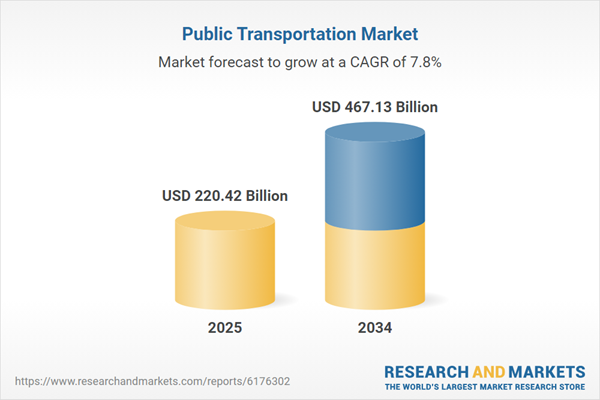Report on Fire Service Innovation and Alignment with Sustainable Development Goals
Advancing SDG 9: Fostering Innovation and Resilient Infrastructure in Public Safety
A keynote address by Fire Chief Dan Munsey at the FireFusion 2025 conference highlighted the urgent need for the fire service to embrace innovation, thereby contributing to Sustainable Development Goal 9 (Industry, Innovation and Infrastructure). Munsey argued that the sector must move beyond its traditional operational paradigms to build resilient infrastructure and foster technological adoption. He identified a critical lag in technology uptake, noting that a reluctance to change hinders progress and the development of sustainable public safety solutions.
- The fire service is identified as the second-slowest adopter of technology, a significant barrier to achieving modern efficiency and safety standards.
- Emerging technologies offer opportunities to integrate public safety into broader smart city initiatives, aligning with the goals of building resilient and innovative infrastructure.
- A cultural shift is required to overcome the mindset of “it’s always worked,” which is self-destructive in an era of exponential technological growth.
The Role of Smart Cities in Achieving SDG 11: Sustainable Cities and Communities
The development of “smart cities” was presented as a direct pathway to achieving SDG 11 (Sustainable Cities and Communities) by making urban settlements safer, more resilient, and sustainable. A smart city utilizes digital technology and data analytics to enhance the quality of life and improve municipal services. For the fire service, this represents a fundamental shift towards data-driven harm prevention.
- Smart city technology leverages data from sources like IoT sensors and cameras to optimize urban infrastructure and improve public safety.
- Chief Munsey emphasized that data is a community’s greatest resource, and its effective utilization is key to preventing harm and protecting citizens.
- The fire service must proactively lead the integration of public safety systems into smart city frameworks to ensure community resilience and safety in an increasingly connected world.
Enhancing Connectivity and Data Integration for Sustainable Operations
Achieving sustainable and effective emergency response requires robust digital infrastructure, a core component of SDG 9. Chief Munsey stressed that connectivity is the foundation for leveraging modern technology. Without integrated networks, the potential of advanced tools to create safer communities under SDG 11 cannot be realized.
- The creation of mesh networks, redundancies, and fail-safes is essential for connecting firefighters and emergency vehicles.
- Integration of technologies like ArcGIS mapping and common operating platforms is pivotal for improving traffic preemption, citizen alerts, and overall situational awareness.
- A move from siloed, hardware-based data systems to unified, cloud-based platforms is necessary to standardize data and enable comprehensive analysis for better operational pictures.
Strategic Framework for Technological Adoption and SDG 17: Partnerships for the Goals
A strategic plan is essential for guiding the fire service’s technological evolution. Chief Munsey outlined a framework built on four pillars, emphasizing that successful implementation relies heavily on collaboration, directly reflecting SDG 17 (Partnerships for the Goals). By forming multi-stakeholder partnerships, the fire service can accelerate innovation and achieve its sustainability objectives.
- Culture: Fostering an organizational culture that is receptive to change and innovation.
- Training: Equipping personnel with the skills to utilize new technologies effectively.
- Infrastructure: Investing in and building the foundational digital and physical infrastructure.
- Re-imagining Budgets: Developing financial models that prioritize and support long-term technological investment.
Munsey cited his department’s public safety cloud partnership with Microsoft, Insight, and the Western Fire Chiefs Association as a successful example of SDG 17 in action, demonstrating that relationships and collaboration are the catalysts for innovation and progress toward a more sustainable and effective future in public safety.
Analysis of Sustainable Development Goals in the Article
1. Which SDGs are addressed or connected to the issues highlighted in the article?
- SDG 9: Industry, Innovation and Infrastructure: The article’s central theme is the need for the fire service to innovate and adopt new technology. It discusses building resilient digital infrastructure, such as mesh networks, cloud-based data systems, and integrating modern technology to move away from outdated methods.
- SDG 11: Sustainable Cities and Communities: The article explicitly focuses on the “smart cities” movement. It describes how using digital technology, data collection (from IoT sensors and cameras), and integrated systems can enhance public safety, improve city services, and make urban areas more responsive and resilient.
- SDG 17: Partnerships for the Goals: The article highlights the importance of collaboration to achieve technological advancement. Fire Chief Dan Munsey mentions forming a “public safety cloud partnership” with Microsoft, Insight, and the Western Fire Chiefs Association, demonstrating a multi-stakeholder approach to innovation.
2. What specific targets under those SDGs can be identified based on the article’s content?
- Target 9.1: “Develop quality, reliable, sustainable and resilient infrastructure…to support economic development and human well-being.” The article supports this by advocating for the creation of “mesh networks, redundancies and fail-safes” and moving from siloed computer-aided dispatch (CAD) systems to integrated cloud platforms to ensure reliable emergency communications.
- Target 11.b: “By 2020, substantially increase the number of cities and human settlements adopting and implementing integrated policies and plans towards…resilience to disasters…” The concept of a smart city, as described in the article, is an integrated plan. Using technology like ArcGIS mapping, traffic preemption, and real-time data from buildings (detection and sprinkler systems) directly enhances a city’s resilience to emergencies and disasters.
- Target 17.17: “Encourage and promote effective public, public-private and civil society partnerships, building on the experience and resourcing strategies of partnerships.” The article provides a direct example of this target by citing the partnership between the San Bernardino County Fire Protection District, Microsoft, Insight, and the Western Fire Chiefs Association to build a public safety cloud.
3. Are there any indicators mentioned or implied in the article that can be used to measure progress towards the identified targets?
- Implied Indicator for Target 9.1: The level of integration of data systems. The article contrasts a “1970s solution” of networking 11 different CADs with the modern approach of “putting our information in the cloud and combining smart data from smart cities.” Progress could be measured by the number of siloed data systems successfully migrated to a standardized, common cloud platform.
- Implied Indicator for Target 11.b: The deployment and utilization of specific public safety technologies within the smart city framework. The article mentions technologies that can “track every person in every room in a building,” show “detection systems, sprinkler systems and other system statuses,” and enable “traffic preemption and vehicle alerts.” An indicator would be the percentage of city infrastructure equipped with these integrated IoT sensors and the frequency of their use in emergency response.
- Direct Indicator for Target 17.17: The number and scope of public-private partnerships established for public safety innovation. The article explicitly names a partnership formed with Microsoft, Insight, and the Western Fire Chiefs Association, which serves as a concrete example and a measurable indicator of progress.
SDGs, Targets and Indicators Table
| SDGs | Targets | Indicators |
|---|---|---|
| SDG 9: Industry, Innovation and Infrastructure | Target 9.1: Develop quality, reliable, sustainable and resilient infrastructure. | Implied: The number of siloed data systems (e.g., CADs) migrated to an integrated, standardized cloud platform. The establishment of mesh networks and redundancies for emergency communications. |
| SDG 11: Sustainable Cities and Communities | Target 11.b: Increase the number of cities adopting and implementing integrated policies and plans towards resilience to disasters. | Implied: The percentage of city infrastructure equipped with integrated IoT sensors for public safety (e.g., building status, traffic preemption). The utilization of common operating pictures and platforms like ArcGIS mapping in emergency response. |
| SDG 17: Partnerships for the Goals | Target 17.17: Encourage and promote effective public, public-private and civil society partnerships. | Direct: The number of public-private partnerships formed to advance public safety technology, such as the one mentioned with Microsoft, Insight, and the Western Fire Chiefs Association. |
Source: firehouse.com






